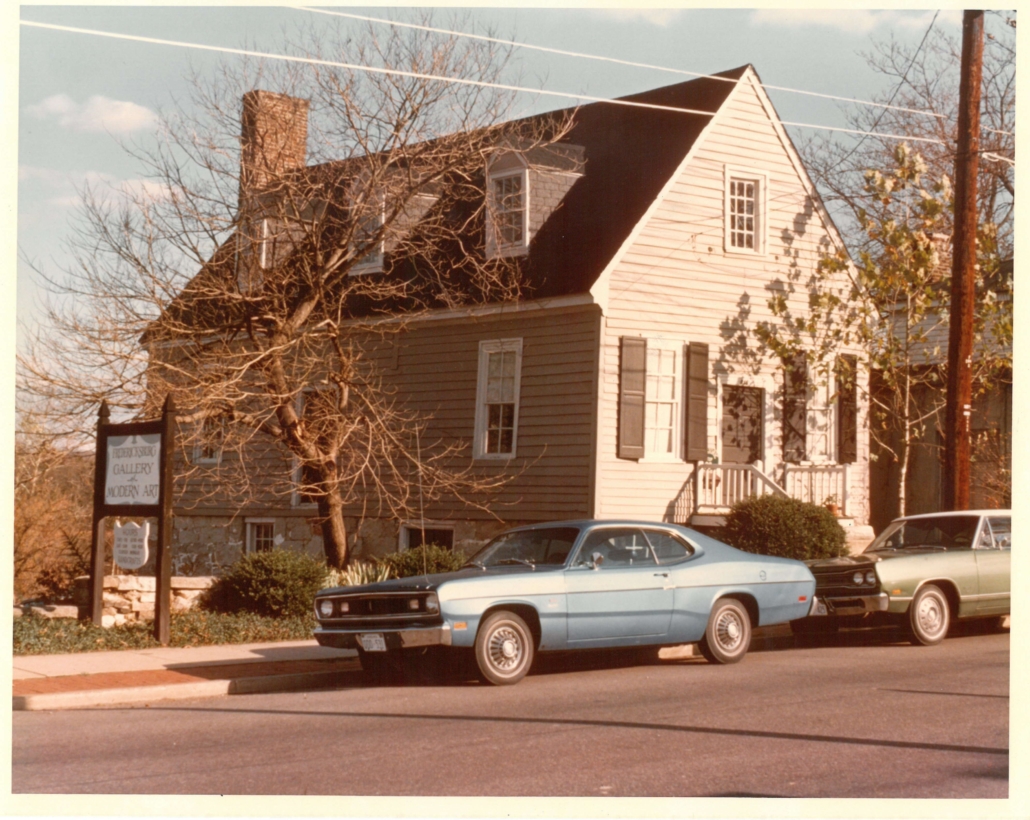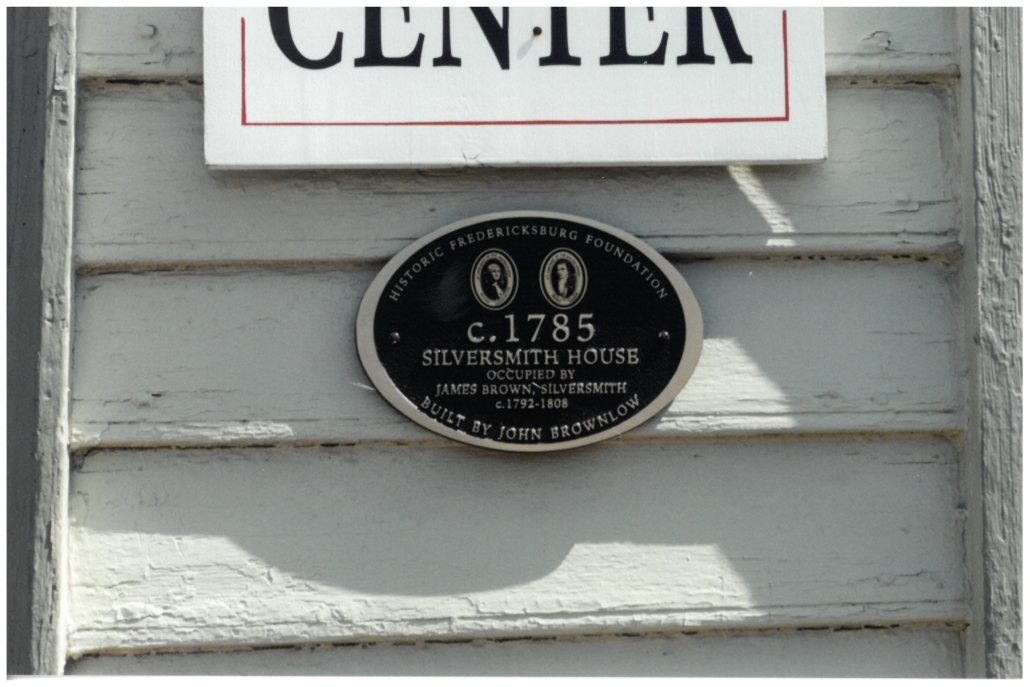“Battle of the Silversmith House” fought in 1962
Written by Wendy Migdal, Edits by Linda Billard, HFFI Volunteers
Soon after the Revolutionary War, a small one-and-a-half story wooden house was built on Sophia Street. Its address would not become 813 until years later. It rested on a shelf of shale by the river and had two levels of basements. Other than that, it was not remarkable for its time.

In about 1786, James Brown and his bustling family—a wife and six children—moved in. Brown was a jeweler and a silversmith, and his occupation gave the house the name it is known by today. The showroom and counting rooms were downstairs, and the family was crowded together in the half-story upstairs. Customers entered on George Street, which, at that time, continued all the way to the river.
The house passed through several generations of Brown’s descendants. The entrance was moved to Sophia Street, and interior stairs were added to reach the basement. Little else changed, even as another war came and went and shells flew overhead.
However, by 1961, this ordinary late 18th century structure had become extraordinary. Everything around it had changed. Ironically, as one of the few surviving commercial buildings in Fredericksburg from the 1700s, it was to be sacrificed for commercial interests of the 20th century. Bought by the city, it was to be replaced by that bane of our society, the parking lot. Downtown merchants, concerned about growing business on Route 1, demanded more parking.
Historic Fredericksburg, Inc. (now the Historic Fredericksburg Foundation, Inc. or HFFI) went into action, and a lengthy battle began. At first, HFFI considered a city suggestion to move the house (by now called the Cole house). This idea was rejected because it would destroy a key aspect of the house’s significance—its location. Then HFFI President Lillian Reed offered to buy it from the City Council. The town merchants resisted; they wanted their parking lot. Other options were considered, such as modernizing the building to use as a shopping destination or making it into public restrooms. Fortunately, a better solution emerged.
In February 1962, the City Council, feeling bound its promises to the merchants, ordered demolition of the house within 30 days. Offers began pouring in from people willing to dismantle the structure in exchange for the irreplaceable, hand-hewn materials. But the darkest hour is just before dawn. In April, HFFI notified the council that it had purchased another house at 1007 Sophia Street and would offer this to the city in a swap. The new location would provide 23 parking spaces versus the measly 5 offered by the Cole house.

The house was saved, and HFFI won a major battle. The organization immediately leased (and later sold) the property to the Fredericksburg Gallery of Modern Art, now called the Fredericksburg Center for the Creative Arts. Just as important, that February 1962 meeting resulted in the first discussion of a proposal that eventually became the Historic District Ordinance and marked a turning point in the city’s attitude toward historic buildings.
May is National Preservation Month. Take the time to celebrate our historic buildings, visit some of your favorite locations, and support organizations that protect Fredericksburg’s historic character.
(This article can also be found in the Front Porch May 2019 edition.
https://issuu.com/frontporchfredericksburg/docs/fpfmay2019?fbclid=IwAR2bog7hJ47VA_4MMc16Jxvyrx-OFoL-fF2yv_vGA4mj2wqOvUakk6DecH4)

Leave a Reply
Want to join the discussion?Feel free to contribute!